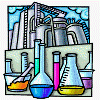Chemical and Biomolecular Engineering, Department of: Papers in Subdisciplines

Papers in Biochemical Engineering
ORCID IDs
Date of this Version
12-10-1998
Citation
Journal of Enzyme and Microbial Technology (1998)
Abstract
This study was undertaken to determine the optimum pH, temperature and glycerol feed rate for the production of recombinant hookworm (Ancylostoma caninum) anticoagulant peptide (rAcAP-5) by Pichia pastoris using response surface methodology (RSM). A central composite design was used as an experimental design for allocation of treatment combinations in three blocks. The variables selected for study were pH, temperature and glycerol feed rate. pH was the most important variable affecting yield, specific yield and specific activity of rAcAP-5. Glycerol feed rate had a significant effect on the specific activity of rAcAP-5 (% of total secreted protein) while temperature did not have a significant effect on the responses. The data showed a trend that gave maximum responses and there was no blocking effect on the responses. The RSM formulated three second order polynomial empirical models relating to the responses. From these models it was possible to determine the optimum conditions variables for maximum yield of rAcAP-5 (1.2g I-1), the maximum specific yield of rAcAP-5 (11.5 mg g -1dry cell) and the maximum specific activity of rAcAP-5 (96% of total secreted protein).


Comments
Copyright © 1998, Elsevier. Used by permission